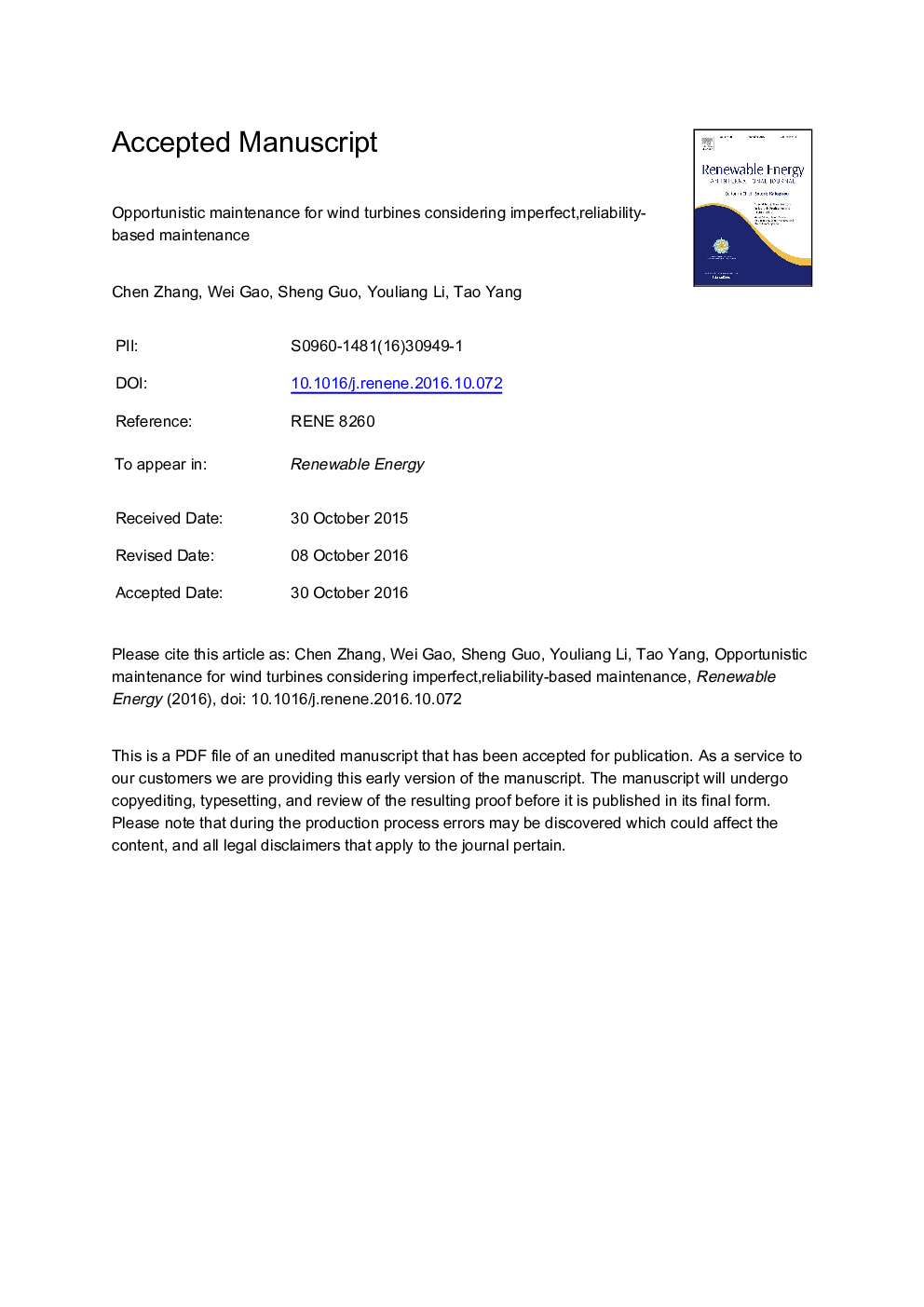| Article ID | Journal | Published Year | Pages | File Type |
|---|---|---|---|---|
| 4926600 | Renewable Energy | 2017 | 23 Pages |
Abstract
Corrective maintenance and time-based maintenance have been widely employed in wind farms. However, the actual maintenance strategy is much more complex and diverse, and also maintenance actions do not always return the system to “as good as new” condition. Moreover, dependencies exist in multi-component systems, and it is more economical to perform preventive maintenance whenever a repair opportunity presents itself. For an opportunistic maintenance strategy, when the system is shut down for maintenance, the maintenance time of other still functioning parts can be moved up to take advantage of the huge downtime losses. In this paper, an opportunistic maintenance approach is proposed for wind turbines considering an imperfect maintenance schedule that is based on reliability. A hybrid hazard rate model is used to describe imperfect maintenance and explain the effects of corrective maintenance action. Comparative examples are used to illustrate the economic advantages of opportunistic maintenance. Simulation results demonstrate the impact that various maintenance costs (fixed downtime cost and preventive replacement cost) have on the economic benefit of opportunistic maintenance strategy. The simulation analysis also provides the optimal opportunistic maintenance reliability threshold using the fruit fly optimization algorithm to provide guidance for the actual operation and maintenance of wind farms.
Keywords
Related Topics
Physical Sciences and Engineering
Energy
Renewable Energy, Sustainability and the Environment
Authors
Chen Zhang, Wei Gao, Sheng Guo, Youliang Li, Tao Yang,
